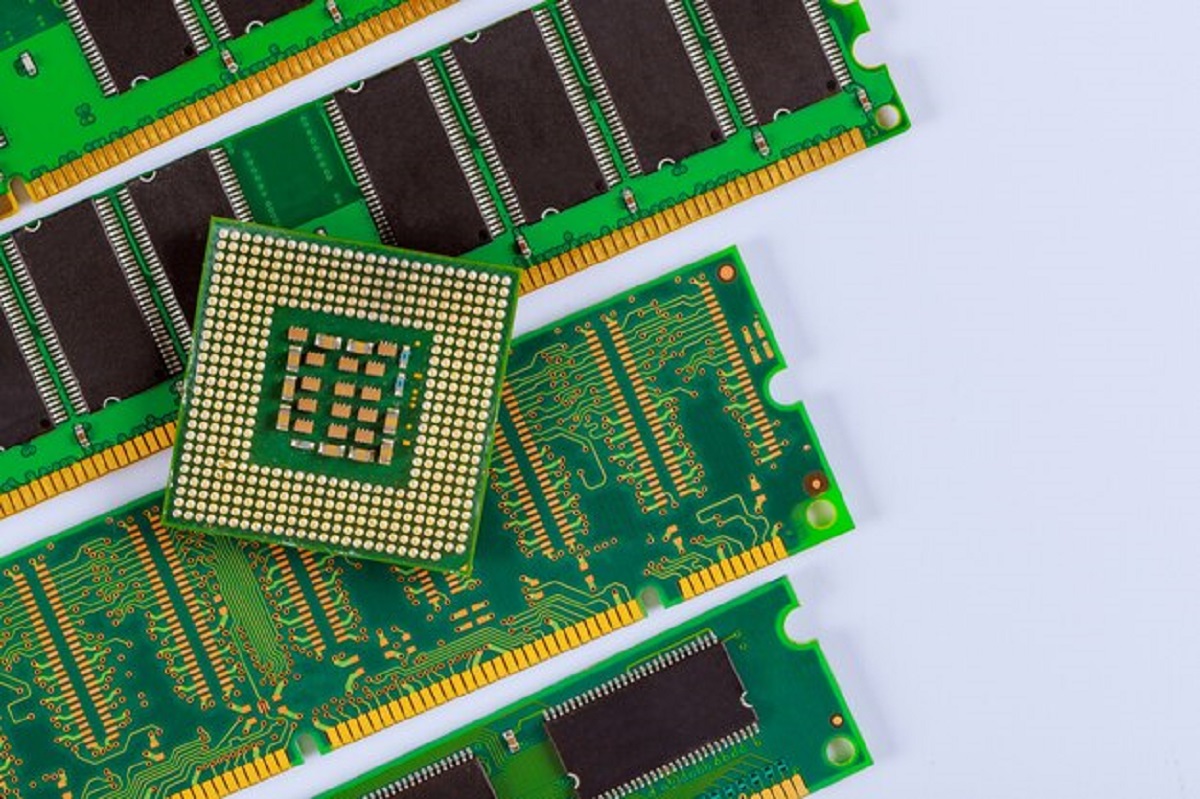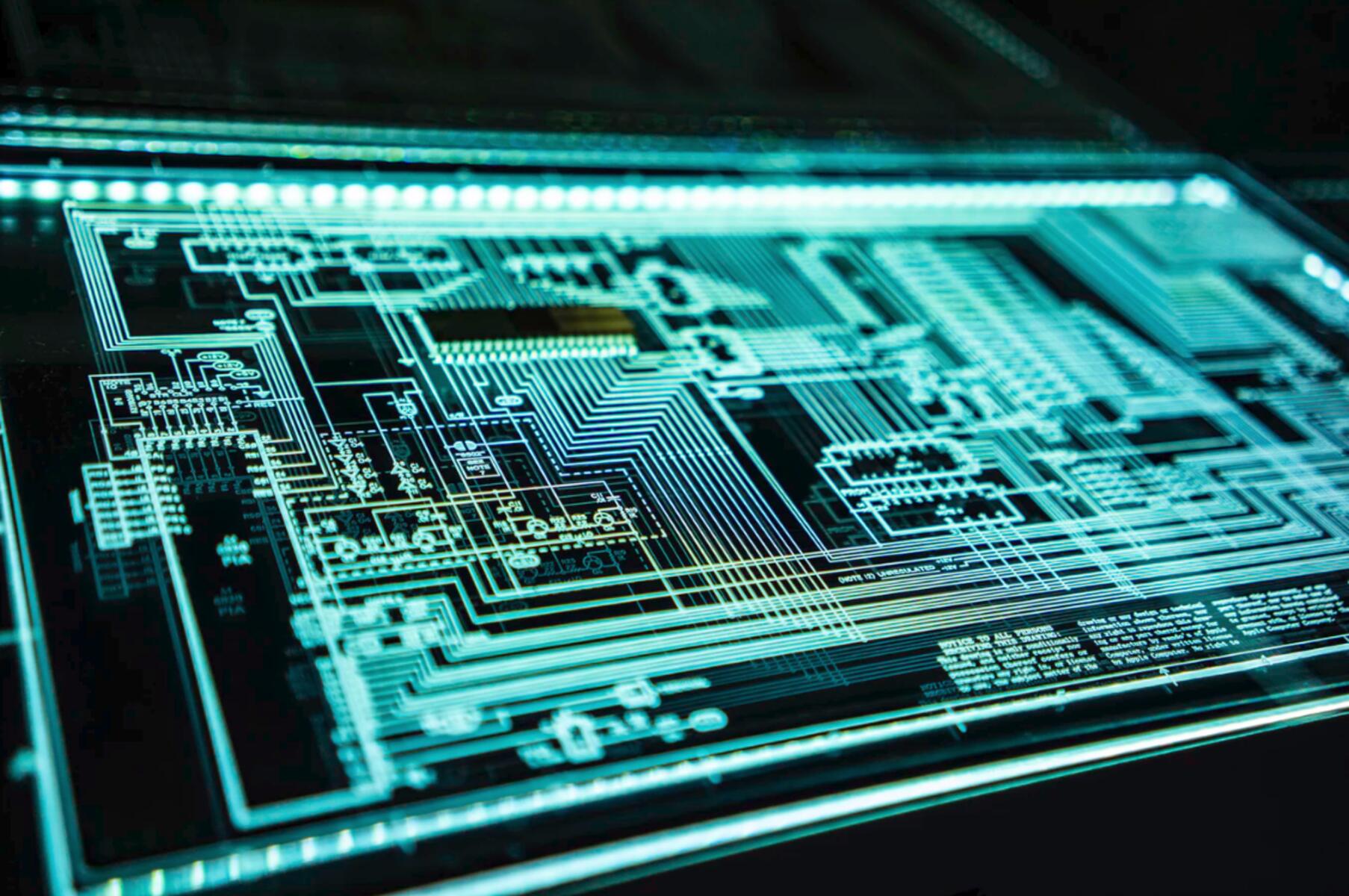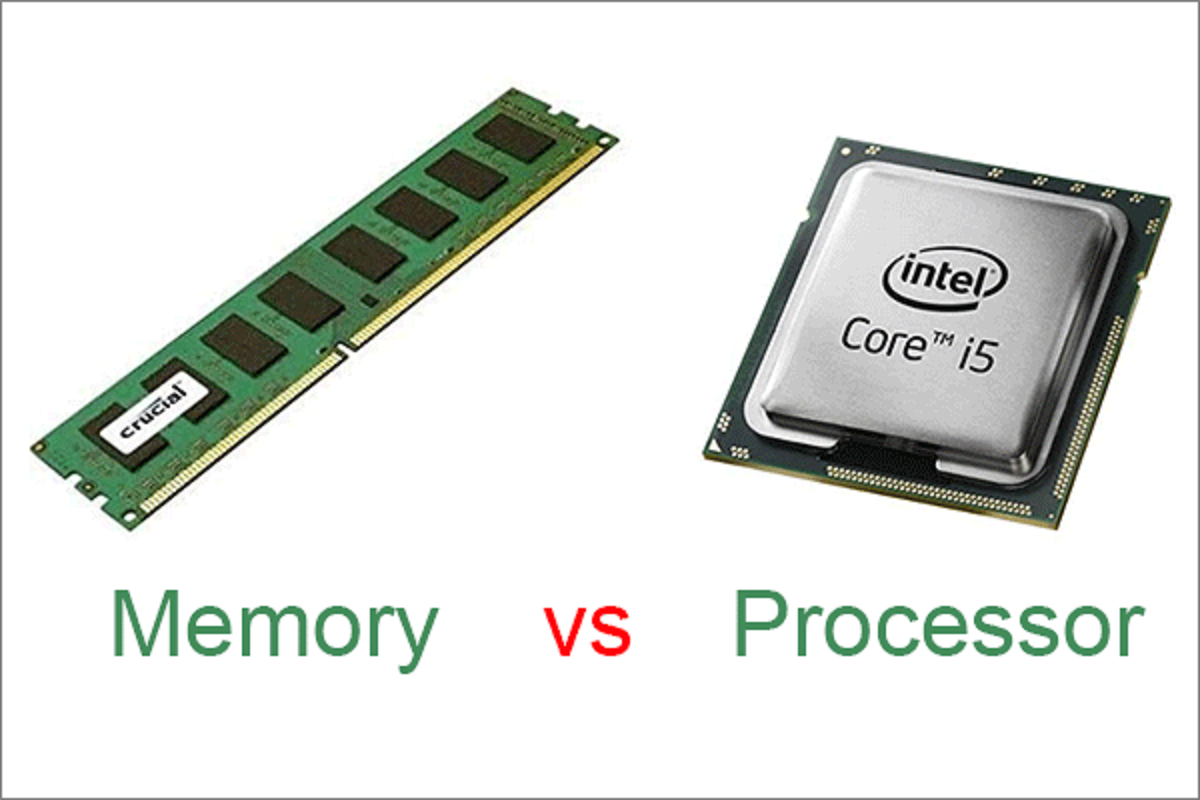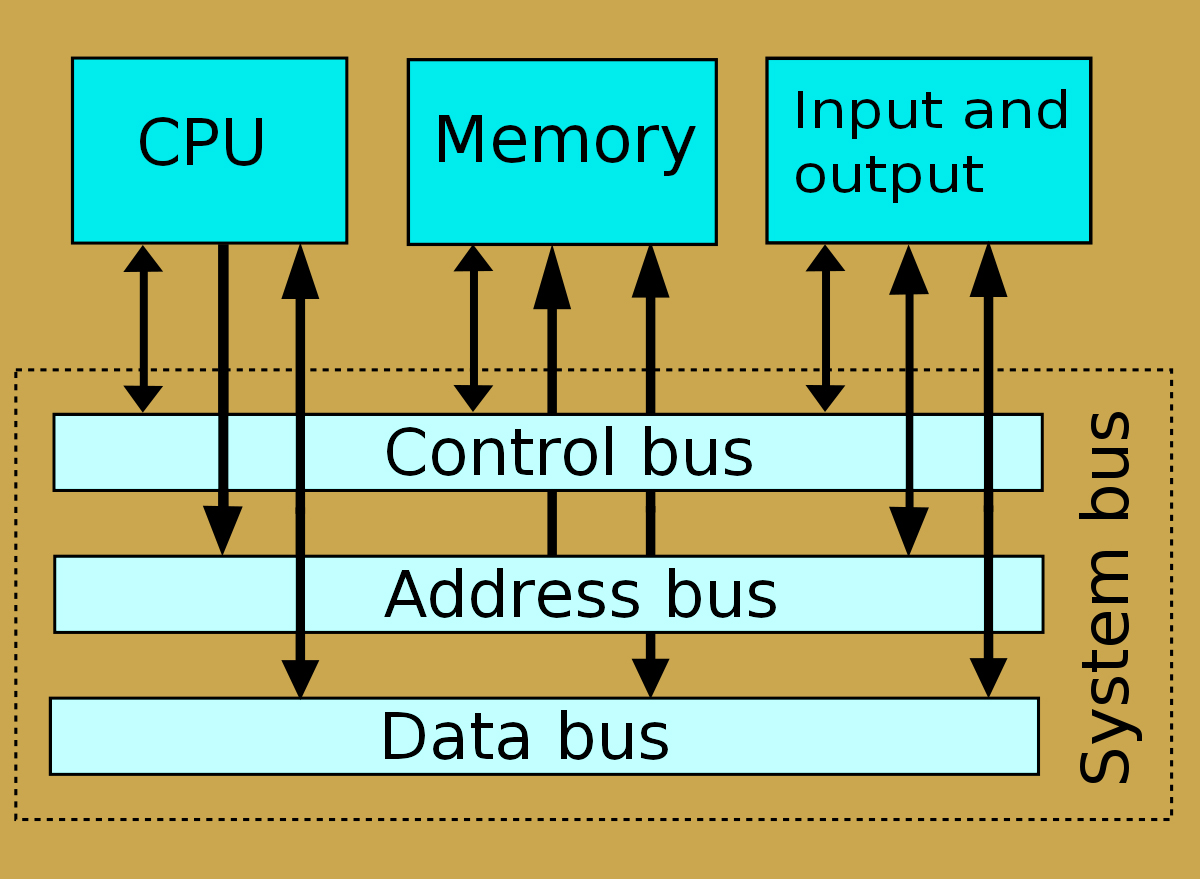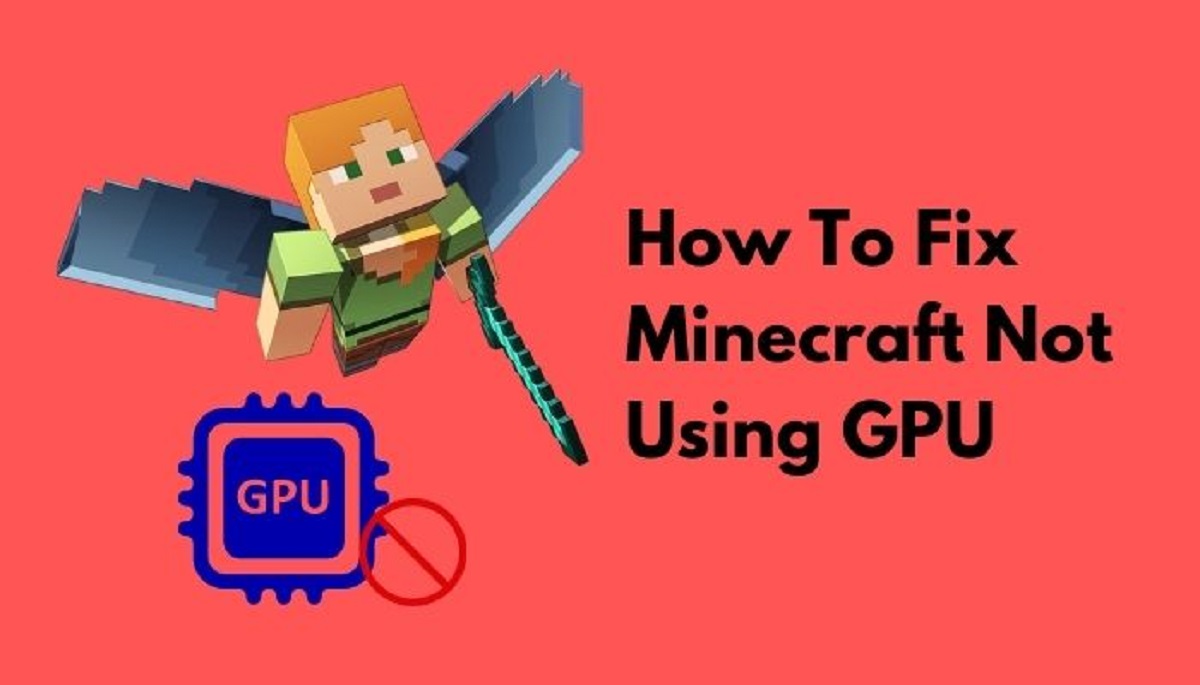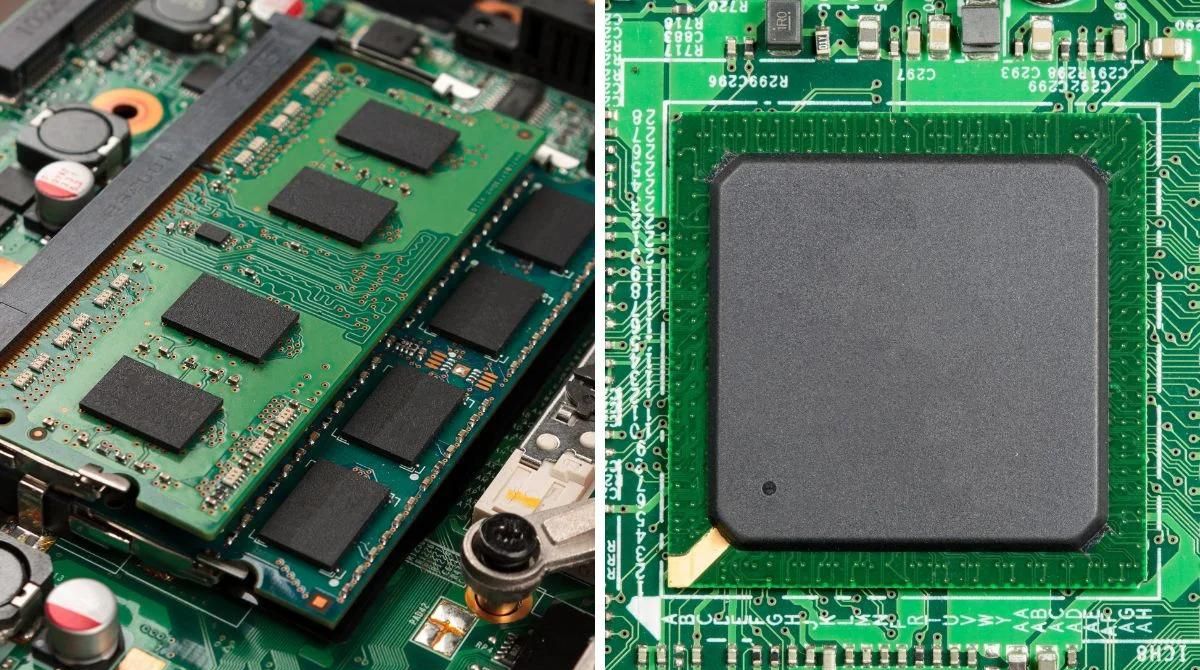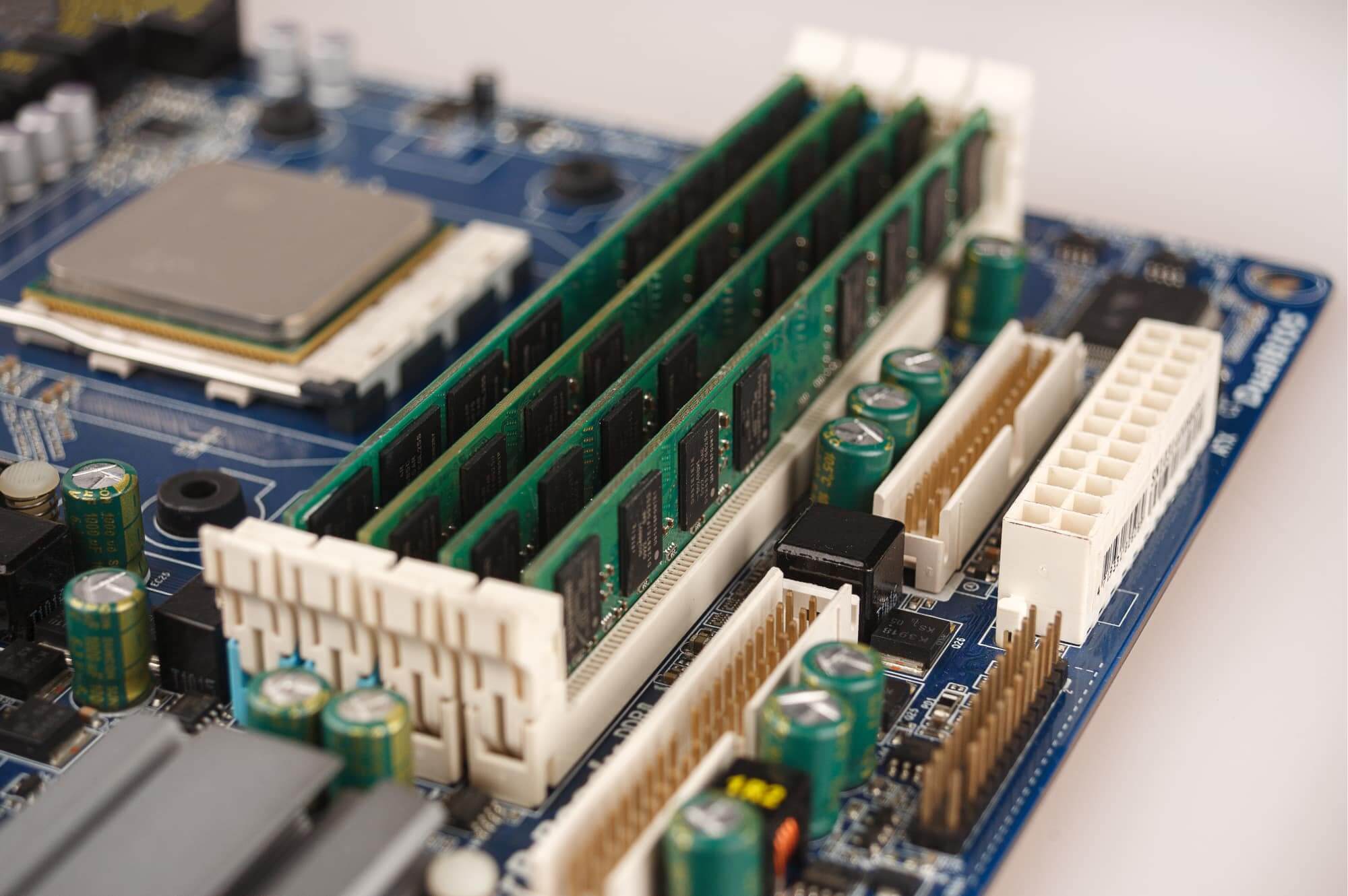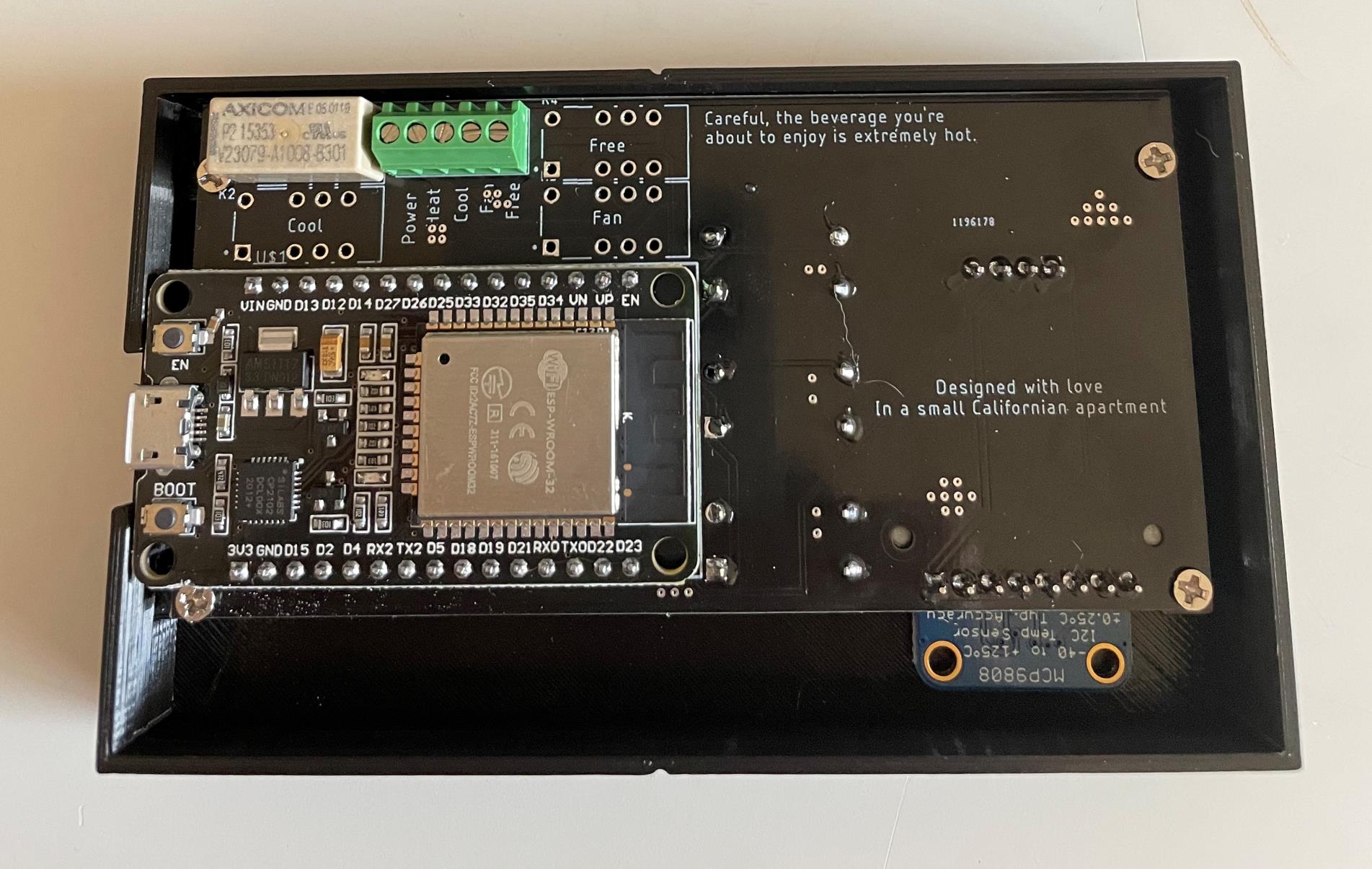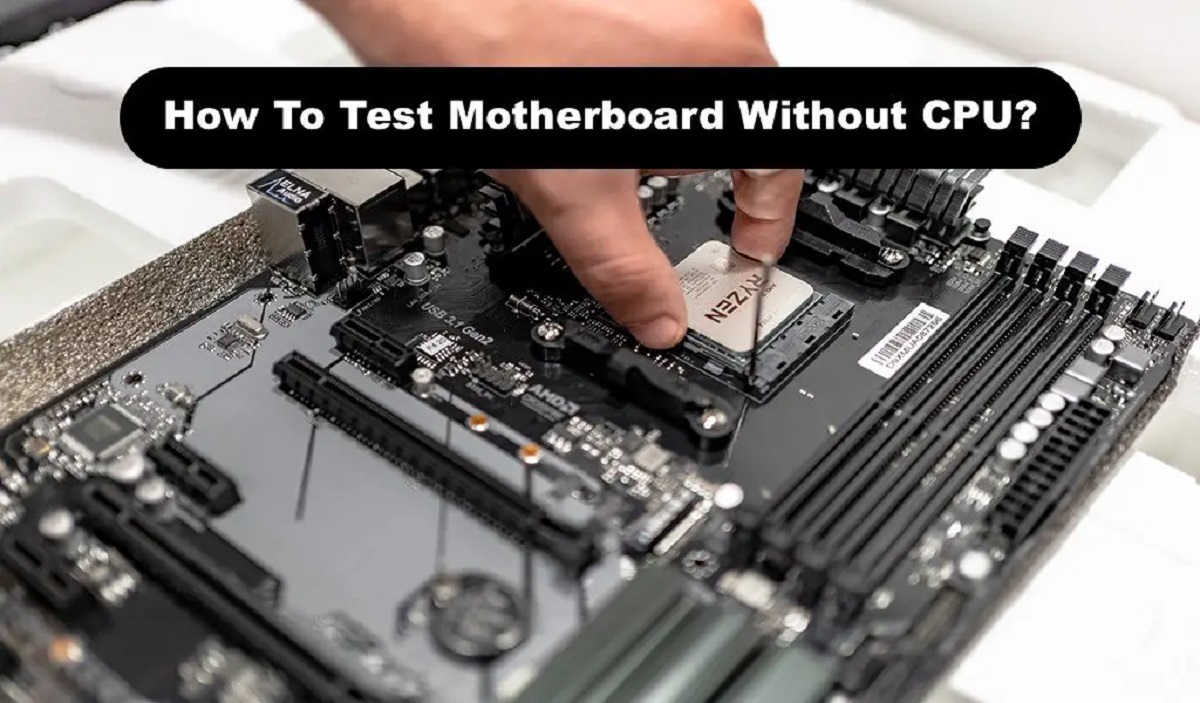Introduction
Welcome to the world of computers, where complex tasks are executed at lightning-fast speeds. Have you ever wondered how a computer carries out all the operations you command it to perform? It’s all thanks to the perfect harmony between the central processing unit (CPU) and random access memory (RAM). These two vital components work together seamlessly, enabling your computer to perform tasks efficiently and effectively.
The CPU serves as the brain of the computer, responsible for executing instructions and performing calculations. RAM, on the other hand, acts as the temporary storage space where data is stored and accessed by the CPU. But how exactly do these two components collaborate to carry out the complex processes behind your computer’s functionality?
In this article, we will delve into the intricate relationship between the CPU and RAM, exploring the process by which they work together to execute instructions and manipulate data. We will examine the step-by-step procedure that occurs when you perform any task on your computer, from opening a program to playing a game.
By understanding the inner workings of the CPU and RAM, you will gain valuable insight into the performance and efficiency of your computer. So, let’s dive in and uncover the fascinating connection between the CPU and RAM, unraveling the magic that happens behind the scenes of your daily computer use.
What is a CPU?
The central processing unit (CPU) is the heart and brain of a computer system. It is often referred to as the “processor” and is responsible for executing instructions, performing calculations, and managing the overall operation of the computer. Think of the CPU as the conductor of a symphony, coordinating and directing all the other components to work together harmoniously.
The CPU consists of several components, including the control unit, arithmetic logic unit (ALU), and registers. The control unit is responsible for fetching instructions from memory, decoding them, and coordinating the execution of these instructions. The ALU performs mathematical and logical operations, such as addition, subtraction, and comparisons. The registers are high-speed storage areas used for temporary storage during calculations and data manipulation.
At the heart of the CPU lies the microprocessor, a highly complex integrated circuit that contains millions, or even billions, of transistors. These transistors are responsible for executing the instructions and performing the calculations that make your computer function.
The CPU operates on a clock cycle, which is a synchronized time period during which instructions are fetched, decoded, and executed. The clock speed, measured in gigahertz (GHz), determines the number of clock cycles the CPU can perform in a second. The higher the clock speed, the more instructions the CPU can process in a given time frame, resulting in faster overall performance.
Modern CPUs are designed to handle a wide range of tasks, from simple arithmetic calculations to complex video rendering. They are incredibly powerful and capable of executing billions of instructions per second. The advancements in CPU technology have played a significant role in the exponential growth of computer capabilities over the years.
Now that we have a basic understanding of what a CPU is, let’s explore its relationship with another crucial component of the computer system: random access memory (RAM).
What is RAM?
Random access memory (RAM) is a type of computer memory that serves as a temporary storage space for data and instructions that the CPU needs to access quickly. It acts as a bridge between the CPU and the permanent storage devices, such as hard drives or solid-state drives (SSDs).
Unlike the CPU, which provides the processing power of the computer, RAM is responsible for holding the data and instructions that the CPU requires to carry out its tasks. It is sometimes referred to as “primary memory” or “main memory” because it allows for fast and random access to the stored information.
RAM is made up of small electronic chips that are capable of holding and storing data using electrical charges. Each byte of data in RAM is assigned a unique address, which allows the CPU to retrieve or store information at specific locations in the RAM.
One of the most significant advantages of RAM is its speed. Unlike hard drives or SSDs, which have mechanical components and take longer to access data, RAM provides near-instantaneous access to information. This quick access allows the CPU to retrieve and execute instructions without experiencing significant delays.
Another key feature of RAM is its volatility, meaning that data stored in RAM is not retained when the computer is powered off. This is in contrast to permanent storage devices like hard drives, which can retain data even when the computer is turned off. When you turn off your computer, any data stored in RAM is lost, and the RAM is then ready to be used for new data upon the next system boot-up.
The amount of RAM installed in a computer can have a significant impact on its overall performance. Insufficient RAM can lead to slower performance, as the CPU has to continuously retrieve data from slower storage devices like hard drives. On the other hand, having ample RAM allows for more data to be stored and accessed by the CPU, resulting in quicker and smoother computing experiences.
As technology has advanced, the capacity of RAM modules has increased significantly. Modern computers can now support several gigabytes or even terabytes of RAM, allowing for more extensive multitasking and handling of memory-intensive applications.
Now that we have explored the fundamental concepts of CPU and RAM independently, let’s delve into how these two components work together to make your computer operate efficiently.
How do CPU and RAM work together?
The CPU and RAM work together in a coordinated fashion, with the CPU relying heavily on the fast and temporary storage capabilities of RAM. When you perform any task on your computer, such as opening a program or editing a document, a series of steps occur to ensure that the task is executed smoothly.
Here is a simplified breakdown of how the CPU and RAM work together:
- Fetch instruction: The CPU fetches the next instruction from the computer’s memory. This instruction is stored in a specific location in RAM, and the CPU retrieves it by sending the corresponding memory address.
- Decode instruction: The CPU decodes the instruction, determining the operation that needs to be performed.
- Fetch data: If the instruction requires accessing data from RAM, such as reading a file or retrieving information from a database, the CPU sends the appropriate memory address to fetch the required data.
- Execute instruction: The CPU performs the requested operation, whether it is a mathematical calculation, logical comparison, or any other task specified by the instruction.
- Store results: If the execution of the instruction produces a result or modifies data, the CPU may need to store the results back in RAM or other storage devices to ensure the changes are persisted.
This process is repeated continuously, with the CPU fetching, decoding, and executing instructions, as well as retrieving and storing data as needed. The speed at which the CPU and RAM can perform these operations greatly impacts the overall performance of the computer.
It’s important to note that the CPU and RAM communicate with each other through a high-speed connection known as the system bus. The system bus enables the transfer of instructions and data between the CPU and RAM, allowing for efficient coordination and data exchange.
In some cases, when the available RAM capacity is limited, the CPU may need to transfer data back and forth between RAM and the slower permanent storage devices, such as hard drives or SSDs. This results in increased latency and can lead to performance bottlenecks. To mitigate these issues, modern operating systems employ caching techniques to minimize the need for frequent data transfers between RAM and storage devices.
By working together, the CPU and RAM ensure the efficient execution of tasks, enabling you to perform various actions on your computer. The higher the capacity and speed of RAM, the smoother and faster your computing experience will be.
Fetch Instruction
The first step in the CPU and RAM collaboration is the fetching of instructions. Before the CPU can execute any task, it needs to retrieve the instructions that provide the necessary information for the operation. These instructions are stored in the computer’s memory and specifically in the RAM.
The CPU fetches the next instruction by sending a request to the RAM, specifying the memory address that holds the instruction. The address acts as a unique identifier for the instruction’s location in the RAM. Upon receiving the request, the RAM locates the requested instruction and sends it back to the CPU.
Instructions are typically stored in sequential memory addresses, allowing the CPU to fetch them sequentially as well. This sequential retrieval ensures that the instructions are executed in the correct order, maintaining the integrity and logic of the program or task at hand.
As the CPU fetches the instruction, it stores it in a designated area within its own cache memory, known as the instruction cache. This cache memory is built into the CPU and provides faster access to frequently used instructions.
Once the instruction is fetched and stored in the CPU’s instruction cache, the CPU proceeds to the next step: decoding the instruction.
During the fetch instruction stage, the speed at which the instruction is retrieved from the memory greatly impacts the overall performance of the computer. Faster RAM modules and efficient memory management techniques ensure that the CPU can quickly access the required instructions, minimizing any delays in the execution process.
Now that the CPU has successfully fetched the instruction, let’s move on to the next step: decoding the instruction to understand its purpose and the operation it entails.
Decode Instruction
After the CPU fetches the instruction from the RAM, the next step is to decode the instruction. Decoding involves analyzing the fetched instruction to understand its purpose and determine what operation needs to be performed.
Instructions are stored in a binary format, consisting of a series of bits that represent various components such as the operation to be executed, the memory addresses involved, and any additional data required for the operation. The CPU’s control unit, responsible for instruction decoding, interprets these binary patterns and extracts the relevant information.
Using the opcode (operation code) field of the instruction, the control unit identifies the type of operation to be performed. This can include arithmetic calculations, logical operations, data transfers, or control flow instructions like branching or jumping to different parts of the program. The control unit then determines the specific circuitry or functional units within the CPU that will carry out this operation.
Furthermore, decoding may involve identifying any additional operands or data values required for the instruction. These operands could be memory addresses from where the data needs to be fetched or stored, or they could be constant values directly embedded in the instruction itself. The control unit extracts these operand values to prepare for the next stage of execution.
During the decode instruction phase, the CPU prepares itself for the upcoming execution by setting up the necessary circuits and internal registers. These preparations include routing the data paths, activating the appropriate functional units, and ensuring that all the required resources are available to complete the operation.
Once the instruction is decoded, the CPU moves on to the next step: fetching any necessary data from the RAM or other memory locations. This data is essential for executing the instruction and producing the desired outcome.
Now that we have explored how the CPU decodes the fetched instruction, let’s proceed to the next stage: fetching the necessary data.
Fetch Data
After the CPU has decoded the instruction, the next step in the CPU and RAM collaboration is fetching the necessary data. Many instructions require the CPU to access specific data values from the RAM in order to perform calculations, manipulations, or comparisons.
The CPU sends a request to the RAM, specifying the memory address where the required data is stored. Similar to the fetch instruction process, the RAM locates the requested data using the provided address and transmits the data back to the CPU.
The data retrieved from the RAM can include variables, constants, arrays, or any other information that the instruction needs for its execution. This data is transferred from the RAM to the CPU’s cache or internal registers, where it can be easily accessed and manipulated by the CPU.
Efficient memory management plays a crucial role in the fetch data process. Modern computers employ various techniques such as memory caching and prefetching to enhance data retrieval speed. Caches, located closer to the CPU, store frequently accessed data from the RAM in order to minimize the latency associated with accessing main memory. By preloading anticipated data into the cache, the CPU can reduce the number of memory access requests required during the execution of an instruction or program.
During the fetch data stage, the CPU’s performance greatly depends on the speed and efficiency of the RAM. Faster RAM modules, higher bandwidth capabilities, and optimized memory management techniques contribute to reducing data access times and improving overall system performance.
Now that the CPU has successfully fetched the necessary data, it can proceed to the next step: executing the decoded instruction using the retrieved data.
Execute Instruction
Once the CPU has fetched the instruction and the necessary data, it is ready to execute the decoded instruction. The execution stage is where the actual operation specified by the instruction takes place.
During the execution process, the CPU performs the required task based on the decoded instruction. This can involve a variety of operations, including arithmetic calculations, logical comparisons, data transfers, or control flow changes.
If the instruction involves arithmetic operations, such as addition, subtraction, multiplication, or division, the CPU utilizes its arithmetic logic unit (ALU) to perform the calculations. The ALU is responsible for carrying out these mathematical operations and generating the resulting values.
If the instruction involves logical comparisons, such as checking if two values are equal or if one value is greater than another, the CPU uses its ALU to perform the necessary logical operations.
In the case of data transfers, the CPU moves data from one location to another, whether it be transferring data from one register or cache to another, or storing it back into the RAM or other storage devices.
Control flow instructions, such as branching or jumping to different parts of the program, also fall under the execution stage. These instructions alter the sequence of instructions that the CPU follows, allowing for conditional or repeated execution of certain blocks of code.
During instruction execution, the CPU relies on the data values retrieved from the RAM or its internal registers to perform the necessary calculations or comparisons. The ALU operates on these data values and produces results based on the specific instruction being executed.
The execution stage is crucial for carrying out the desired outcome of the instruction, whether it’s performing a calculation, transferring data, or modifying program flow. The speed and efficiency of the executed instructions directly impact the overall performance of the CPU and, consequently, the overall performance of the computer system.
Now that the CPU has executed the instruction, we move on to the final step: storing the results produced by the instruction.
Store Results
After the CPU has successfully executed the instruction, the next step is to store any results or changes produced by the instruction. Depending on the nature of the instruction and its operation, the CPU may need to save the outcome back into the RAM, cache, or other storage devices.
If the instruction produces a result value, such as the sum of two numbers or the outcome of a logical comparison, the CPU stores this result in a designated location. This location can be a register, which is a small, high-speed storage space within the CPU, or it can be written back to the RAM for more permanent storage.
In the case of data transfers, where the instruction involves moving data from one location to another, the CPU updates the destination with the new data. This can be done by overwriting the existing value or appending the new data to the current contents of the destination memory location.
For instructions that modify the control flow, such as branch instructions or loop counters, the CPU updates the appropriate control registers or flags to reflect the changes. These modifications allow the CPU to alter the program’s flow and execute the subsequent instructions accordingly.
It’s important to note that storing the results often involves write-back operations, where the CPU transfers the data back from its internal registers or cache to the RAM or other storage devices. This ensures that the changes made by the instruction are retained and can be accessed in the future.
Efficient memory management is crucial during the store results stage to ensure that the appropriate storage locations are used and that data is written back correctly. Caches and write buffers are employed to optimize the write-back process and improve overall system performance.
Once the results have been stored, the CPU can proceed to the next instruction in the program or task, restarting the cycle of fetching, decoding, executing, and storing for subsequent instructions.
Now that we have examined the process of storing results, we have gained insight into the complete cycle of the CPU and RAM collaboration. The seamless exchange of instructions and data between these two components enables the smooth functioning of our computers.
CPU and RAM Speed
The speed of both the CPU and RAM plays a crucial role in determining the overall performance and responsiveness of a computer system. The interaction between these components heavily impacts the speed at which instructions are executed and data is accessed.
The clock speed of the CPU, measured in gigahertz (GHz), determines the number of instructions the CPU can process per second. A higher clock speed means that the CPU can execute instructions more quickly, resulting in faster overall performance. However, it’s important to note that clock speed is not the only factor that determines CPU performance. Other architectural features, such as the number of cores and cache size, also contribute to the overall speed and efficiency of the CPU.
The RAM speed, on the other hand, refers to the rate at which data can be read from or written to the RAM. It is typically measured in megahertz (MHz) or gigahertz (GHz). Faster RAM speed enables quicker access to the data stored in RAM, reducing the latency associated with data retrieval. This, in turn, allows the CPU to retrieve the necessary data more rapidly and execute instructions more efficiently.
When the CPU fetches an instruction or data from the RAM, it needs to wait for the data to be transferred. The speed of the RAM determines how quickly the requested data can be accessed by the CPU. Faster RAM modules, such as DDR4 or DDR5, provide higher speeds and lower latencies, resulting in improved overall system performance.
It is worth noting that the CPU and RAM speed should be matched appropriately to avoid bottlenecks in the system. The CPU and RAM need to complement each other, ensuring that the CPU can operate efficiently without being limited by the data transfer speeds of the RAM. Incompatible CPU and RAM speeds can lead to a situation where the CPU waits for data, wasting its processing power and reducing overall performance.
Overclocking is another approach that some users may take to boost the speed of their CPU or RAM. Overclocking involves increasing the clock speeds of these components beyond their default settings. While this can yield noticeable performance gains, it also introduces risks such as increased heat generation and reduced system stability. Overclocking should be done cautiously and with proper cooling measures in place, as it can potentially damage the components if not done correctly.
Overall, a balance between the CPU and RAM speed is essential for optimal system performance. Ensuring that both components are suitable for the intended use case and working in harmony can result in a faster and more efficient computing experience.
Conclusion
The collaboration between the CPU and RAM is a fundamental aspect of computer functionality, enabling the execution of instructions and efficient data handling. The CPU serves as the brain of the computer, responsible for executing instructions, while RAM acts as the temporary storage for data required by the CPU.
Throughout this article, we explored the step-by-step process of how the CPU and RAM work together. We learned how the CPU fetches instructions from RAM, decodes them to determine the operation, fetches necessary data, executes the instruction, and stores the results. This continuous cycle allows the computer to perform tasks and operations, providing a smooth user experience.
The speed of the CPU and RAM is crucial for optimal system performance. A faster CPU clock speed allows for quicker execution of instructions, while faster RAM speed enables rapid data retrieval. It is important to ensure a suitable balance between these two components to avoid performance bottlenecks.
Understanding the inner workings of the CPU and RAM helps us appreciate the complex operations happening behind the scenes while we use our computers. It also enables us to make informed decisions when it comes to upgrading or configuring our computer systems for enhanced performance.
The collaboration between the CPU and RAM is a testament to the remarkable advancements in computer technology. As both components continue to evolve, we can expect even faster and more efficient systems that cater to the increasing demands of modern computing.







